Stephen McAvoy and Paul Stancliffe from the look at the ongoing events of the 2016 bird migration
The high-pressure system has been stuck over Scandinavia for well over two weeks now and the resultant easterly winds across the North Sea have provided ideal conditions for the arrival of birds both coming here to spend the winter months and those that were migrating south from Scandinavia through continental Europe.
Thrushes have been leading the charge, the most noticeable being large flocks of Redwing arriving on the east coast of Britain and continuing inland. The BirdTrack graph clearly shows this marked arrival, with the reporting rate jumping from 10% to well over 30% of the last week.
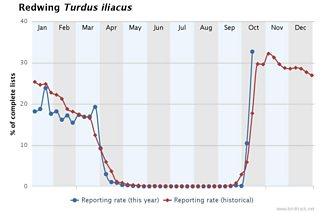
Bird Track data for Redwing 2016
Curiously, the other typical ‘winter’ thrush, Fieldfare, has not featured quite as much and the reporting rate on BirdTrack is very much following the historical pattern.
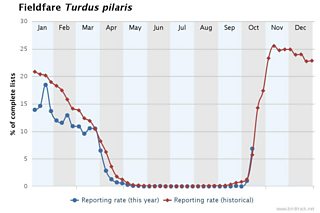
Fieldfare Bird Track data 2016
Similar to Redwing, there was a significant peak in Ring Ouzel records last week, having previously lagged behind the historical reporting rate on BirdTrack. Although most likely to be seen at exposed coastal locations, Ring Ouzels are regularly reported from inland locations and even suburban gardens so keep an eye out for one in the next week.

Ring ouzel Bird Track data 2016
Further Scandinavian arrivals in the last week include the first Brambling of the autumn, as well as Song Thrush, Blackbird and Robin. Some are likely to remain for the winter, while others may continue further south to Continental Europe. A Waxwing was spotted on Shetland on Wednesday, but it is still too early to tell if this will be a ‘Waxwing’ winter.
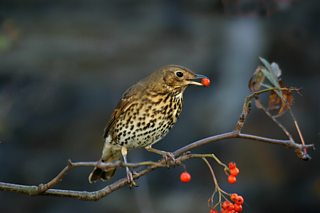
Credit: John Harding
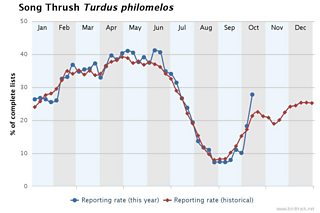
Song thrush Bird Track 2016
A few Short-eared Owls have been seen ‘coming in’ over the sea, and with the weather conditions set to continue for a few more days yet we could see more of these beautiful owls. Swallows and House Martins continue to trickle out, with counts at south coast watchpoints still managing to reach a hundred or so birds on some days.
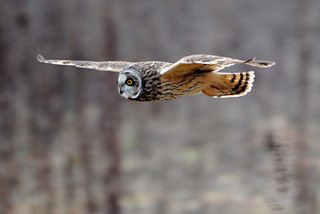
Credit: Amy Lewis
In terms of rare birds, the week has well and truly belonged to the Siberian Accentor. This eastern relative of the Dunnock has been involved in an unprecedented invasion into Europe this autumn, with 20 birds noted in Finland, Sweden, Poland, Germany and Denmark. This contrasts with one or two seen annually across Europe in the last few decades. The first record for Britain was found on Shetland last Sunday, and as I write this, another has just been found at Easington, East Yorkshire! With three found together at a site in Germany today, there are bound to be more found in Britain this autumn.
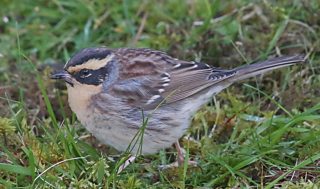
Siberian Accentor. Credit: Paul Chapman
Besides the Siberian Accentor, there was a very impressive supporting cast of extremely rare birds from Siberia: Pine and Black-faced Buntings, Two-barred Greenish and Eastern Crowned Warblers, Brown Shrikes and a Siberian Thrush, as well as several more White’s Thrushes.
The first Pallas’s Warblers are joining the numerous Yellow-browed Warblers found this autumn. The reporting rate on BirdTrack of the latter this week reached an unprecedented 7%, far eclipsing last year’s record. Further rare warblers included both Dusky and Radde’s Warblers noted at several sites along coastal sites this week.
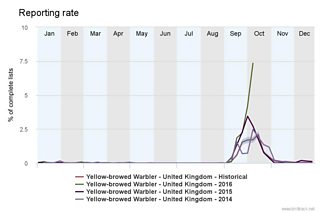
Yellow-browed warbler Bird Track data 2016
The easterly winds look set to continue over the weekend, though they may switch to south to south-westerly for Sunday and early next week. Thrushes, finches and Woodcock, classic October migrants, are likely to continue to arrive with the easterly winds. The change to southerly winds will mix things up and may see the arrival of waterfowl and perhaps even a few Black Redstarts.
